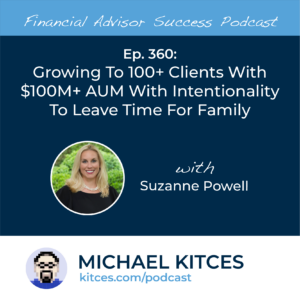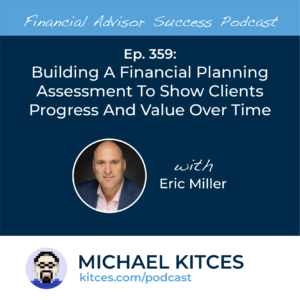One of the main goals of financial advisors who market themselves is to build a foundation of trust with their prospective clients so that they feel comfortable in discussing often-sensitive financial topics and ultimately acting on the advisor's recommendations. The challenge, though, is that advisors usually have only a short amount of time to build this trust, and while advisors can use different channels (e.g., their websites, newsletters, and social media) to demonstrate their expertise, these channels often don't give advisors enough time or space to convey what makes them ultimately worth hiring. This is because telling the full story of an advisor's background, philosophy, and expertise could easily fill up a book; in fact, many advisors have written books to share their knowledge and experience, which can establish them as trustworthy and desirable professionals for prospects to seek out.
In this guest post, Michael Levin, a New York Times bestselling author and ghostwriter, writes about how financial advisors can make a more effective impression on prospective clients by writing, publishing, and distributing a book that establishes their authority, confidence, and, above all, trust.
When writing a book, the first goal is to make the reader feel like the author understands them, which draws them in and makes them want to know more about the author. Establishing that the author understands the reader's problems (e.g., through examples of how the author has solved those problems for others) early on in the book creates a connection with the reader. And because of this rapport, the reader will want to listen to the advisor's story. Put differently, since people care (and want to read) about their own problems, then by extension, they care about the people who understand and can solve those problems, too.
After creating the initial connection, the next goal for the author is to establish expertise in a captivating way. One way to do this is to create value on every page by giving readers clear and authoritative information that they can actually use. Some advisors may be wary of giving away too much information and providing the tools that readers could use to do everything themselves (rather than hiring the advisor). However, in reality, there's almost always more that could be said when a current or prospective client is in the room with the advisor. So, while advisors may want to avoid providing so much information as to be overwhelming to nonexpert readers, being otherwise as generous as possible (for instance, by outlining a detailed process to solve a specific problem) can develop a sense of gratitude in the reader, while giving them a glimpse of what could await them if they became a client.
Finally, as with many other forms of marketing, ending the book with a call to action makes it clear to the reader what they can do next. A brief, clear description of the types of clients the advisor works with, the services provided, and what to expect after the client's initial outreach helps the reader understand whether they might be a good fit as a client and how they can become one (which, if they've made it to the end of the book, they hopefully want to!).
The key point is that while an advisor's book can showcase the advisor's expertise and empathy, the story's real hero is the reader, not the advisor. By keeping the reader and their challenges front and center, the author demonstrates relevant expertise and encourages the reader to trust them with their problems. And when the reader can see themselves reflected in the pages of the book, they'll want to know more about how that advisor can be a part of their journey!




